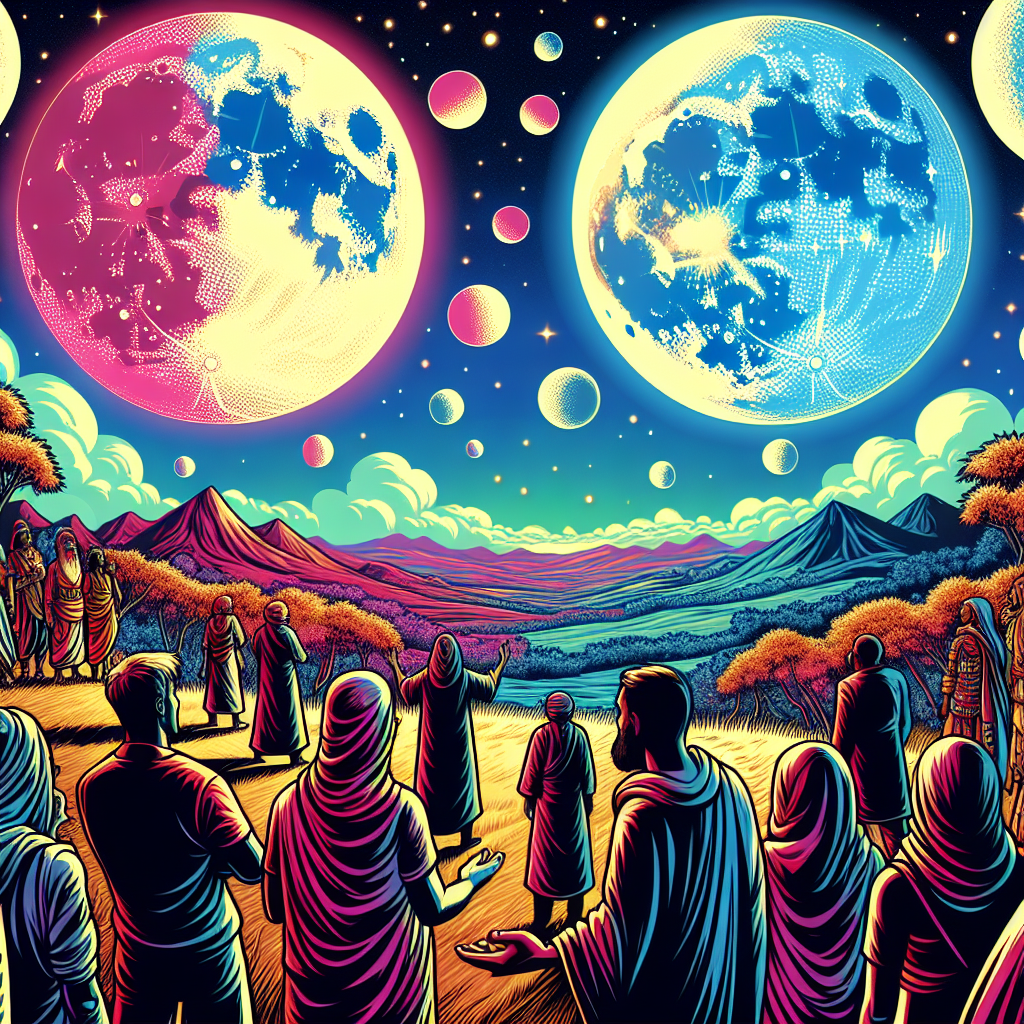If we were to introduce a second moon into our celestial neighborhood, the Earth's tides would undergo a significant transformation. Imagine the ocean's tides as a dance, with the Moon pulling the strings. The Moon's gravity is the lead dancer, and the oceans respond by bulging out in two areas: one on the near side of the Earth and the other on the far side.
With a second moon, the tidal dance would become a complex choreographed routine. The two moons would create two distinct gravitational pulls, each influencing the oceans in its own way. The combined effect would result in more dynamic and varied tidal patterns. In some areas, the tidal ranges would increase, while in others, they might decrease.
To visualize this, imagine two people playing with a stretchy fabric, representing the ocean's surface. One person (Moon 1) is pulling the fabric in one direction, creating a bulge. The second person (Moon 2) starts pulling the fabric in a different direction, creating a second bulge. The resulting shape would be a complex, ever-changing pattern. That's roughly what would happen to the oceans with two moons.
The additional moon's mass would also impact the Earth's rotation. The gravitational interactions between the Earth, Moon 1, and Moon 2 would slow down the Earth's rotation, lengthening our days. Imagine the Earth as a spinning top, and the moons as gentle hands slowing it down.
On the other hand, the extra gravitational force would also increase the Earth's orbital eccentricity – the degree to which the Earth's orbit around the Sun deviates from a perfect circle. This, in turn, would lead to more extreme variations in the planet's climate. It's like having two powerful magnets influencing the Earth's orbit, making it more elliptical.
Now, let's talk about the night sky. With two moons, the lunar cycle would become much more intricate. Imagine a lunar calendar with multiple, interconnected cycles. Moon 1 would follow its traditional phases, while Moon 2 would introduce a new set of phases, periodically aligning with Moon 1's phases. The night sky would be a mesmerizing display of celestial ballet, with the two moons performing an intricate dance.
The presence of a second moon would also influence the Earth's axis. The additional gravitational force would cause the axis to wobble more dramatically, leading to more extreme variations in climate over time. This is comparable to a spinning top that's been nudged, causing it to wobble and sway.
Moreover, the second moon's orbit would affect the stability of the Earth-Moon system. The gravitational interactions would create a complex resonance, potentially leading to chaotic and unpredictable orbits. Imagine two pendulums swinging in tandem, influencing each other's motion in unpredictable ways.
Eclipses would also become more frequent and complex, with the second moon introducing new opportunities for lunar and solar eclipses. Picture the Moon passing between the Earth and the Sun, casting a shadow on our planet, while the second moon might be passing in front of or behind the Sun, creating an intricate pattern of light and shadow.
In terms of satellite technology, the presence of a second moon would require significant redesigns of our orbiting satellites. The additional gravitational force would perturb the orbits of satellites, requiring more sophisticated tracking and navigation systems. It's like trying to navigate a ship through treacherous waters with multiple currents and eddies.
Lastly, the existence of two moons would provide astronomers with a unique opportunity to study the intricate dynamics of a multiple-moon system. By observing the complex orbital interactions, scientists could gain valuable insights into the formation and evolution of our celestial neighborhood. It's like gaining access to a cosmic laboratory, where the laws of physics are on full display.
The introduction of a second moon would be a groundbreaking event, transforming our understanding of the Earth-Moon system. The consequences would be far-reaching, affecting everything from the tides and the Earth's rotation to the night sky and our satellite technology. It's a fascinating thought experiment that encourages us to appreciate the intricate harmony of our celestial neighborhood.

Popular Space Questions
Find answers to the trending space questions being asked by our community on social media.
- How many galaxies are there in the universe?
- How far is Pluto from Earth?
- How many planets are in the Milky Way?
- What would happen if a rogue planet entered our solar system?
- How many planets are in our solar system?
- How big is the Earth?
- What are the planets in order?
- How big is the universe?
- What if we found a way to manipulate gravity?
- What would happen if a pulsar's beam hit Earth?